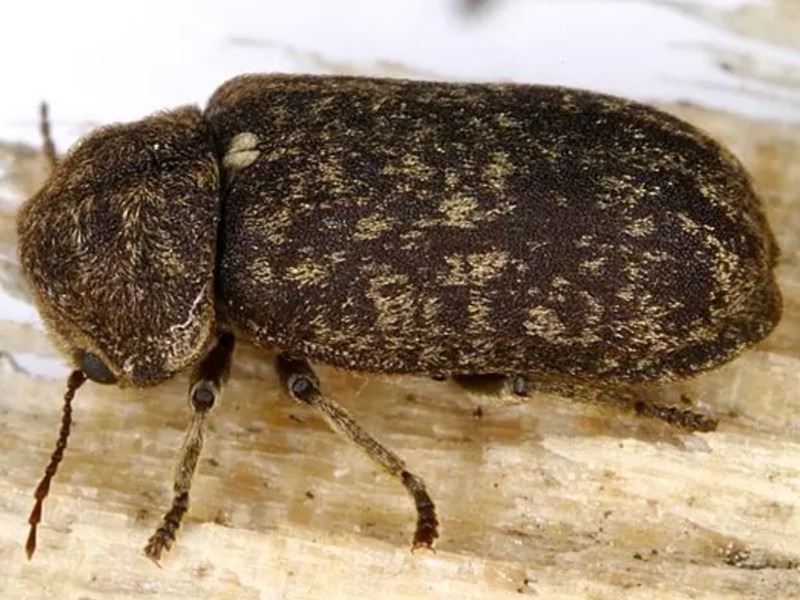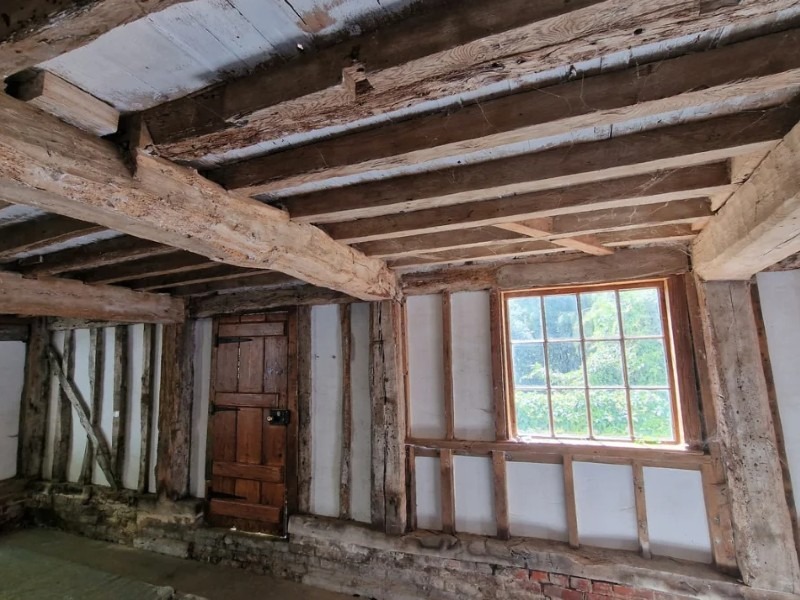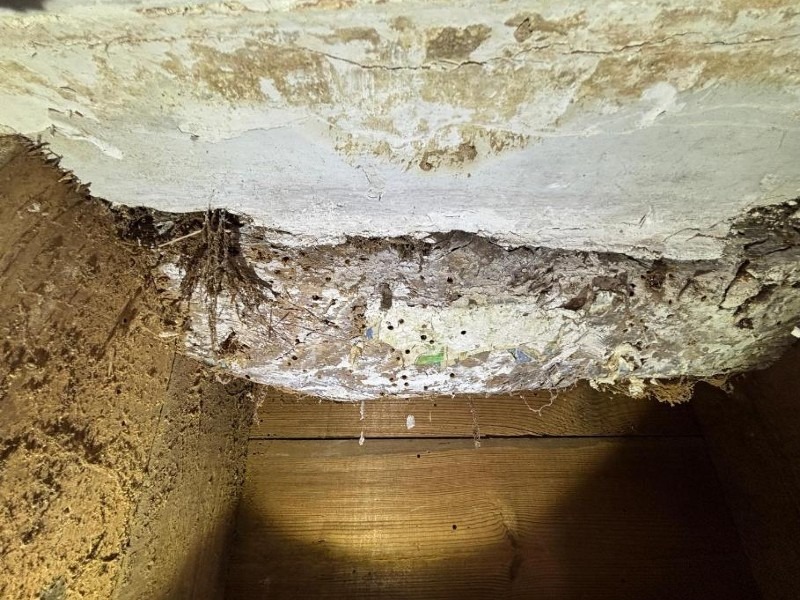Deathwatch Beetle
This blog post will explore what the Deathwatch Beetle is, the subtle symptoms to look for, the potentially severe impact it can have on buildings, and how our specialist timber preservation services can effectively address this destructive pest. The Deathwatch Beetle is a larger wood-boring beetle than the Common Furniture Beetle, typically ranging from 5 to 9 millimetres in length. It is dark brown and has patches of yellowish hairs on its wing cases.

The life cycle begins with eggs laid in crevices within the timber. The larvae, which are creamy-white and curved, then bore through the wood, feeding on the decaying timber for several years – often much longer than the larval stage of the Common Furniture Beetle (sometimes up to 10 years!). This prolonged feeding period is what contributes to the significant structural damage they can inflict. Once mature, the larvae pupate near the surface, and the adult beetles emerge, leaving behind larger exit holes than the Common Furniture Beetle.

Other signs of infestation include faint tapping or clicking sounds, particularly at night, as adult beetles seek mates. The affected timber may feel weak, soft, or crumbly when probed, indicating significant internal damage. Occasionally, you may also see the adult beetles themselves, which are dark brown with distinctive yellowish hair patches, especially during their emergence period in late spring and summer.
The damage is often concentrated in critical areas, including structural joints and supports, which further compromises the building’s stability. Infestations are also commonly associated with damp conditions and poor ventilation, as the beetles prefer decaying timber. This link often highlights underlying maintenance problems that need to be addressed to prevent future infestations and further deterioration.
Repairing Deathwatch Beetle damage is frequently costly and complex, often requiring specialist timber restoration or replacement. In listed or heritage buildings, the process can be even more challenging, as it may involve sourcing matching materials and using traditional construction techniques. Beyond the physical damage, infestations can significantly reduce a property’s value and threaten its historical integrity, making early detection and professional intervention essential.
To eradicate the infestation, we use targeted insecticidal treatments designed to eliminate both larvae and adult beetles. This can include surface applications of professional-grade insecticides to penetrate the wood and kill emerging beetles, as well as the use of preservative timber paste for precise, controlled treatment of affected areas.

Once treatment is complete, we offer guidance on preventative measures and provide long-term monitoring to ensure the infestation does not return, helping to protect the structural integrity and value of your property. If you suspect a Deathwatch Beetle infestation in your Chelmsford, Essex, or surrounding area property, it’s crucial to act quickly. Their silent destruction can have devastating consequences for the structural integrity of your building. Contact Essex and Anglia Preservation today for a comprehensive survey and expert advice. Let our specialist knowledge and experience protect your investment.
